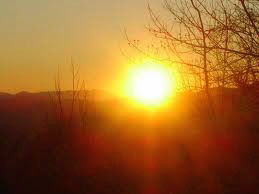My Arachnid World Series, featured a number of spiders:
Black Widows: Deadly Biters
Orb Weavers: Hungry Spinners
Fishing Spiders: Water Ninjas
Wolf Spiders: Mothers On Guard
Jumping Spiders: Gold-Medal Stalkers
Tarantulas: Supersized Predators
The following games and activities will let you have fun investigating spiders.
Can You Solve The Mystery?
The spiders below have been separated into two groups--those that have a common feature and those that don't. What feature do the spiders in Group 1 share?
 |
| Group 1 |
 |
| Group 1 |
 |
| Group 2 |
 |
| Group 2 |
 |
Now brainstorm at least three other features you could use to regroup the spiders into groups: those that share the feature and those that don't.
Here are two possibilities to get your creative juices flowing:
1. Group 1: Those that are light colored; Group 2: Those that aren't.
2. Group 1: Those that look hairy; Group 2: Those that don't.
Here are two possibilities to get your creative juices flowing:
1. Group 1: Those that are light colored; Group 2: Those that aren't.
2. Group 1: Those that look hairy; Group 2: Those that don't.
Having two big middle eyes is a feature jumping spiders share.
- Jumping spiders depend on their eyesight to catch prey, the animals they kill to eat. They have eight eyes: four looking forward, two on top of their head, and two toward the back of their cephalothorax (head and chest-like area).
- Jumping spiders can spot prey as much as twenty body lengths--about 15 inches (38 cm) away.
- Jumping spiders can move their big middle eyes separately to look in two different directions at once.
Find out more about jumping spiders in Jumping Spiders: Gold-Medal Stalkers
You'll need four pipe cleaners (the bigger the better), a paperclip, a rubber band, and a 36-inch (91 cm) piece of string or package ribbon.
1. Place the four pipe cleaners side-by-side and twist together in the middle. Spread the ends of the pipe cleaners apart and bend to form the spider's eight legs.
2. Bend one end of the paperclip around the middle of the toy spider. Hook one end of the rubber band over the other half of the paperclip.
3. Tie one end of the string to the free end of the rubber band.
With an adult partner's permission and help, attach the free end of the string to the ceiling, the top of a bookcase, or the top frame of a doorway. Then enjoy watching your spider in action.
- A spider's silk comes from nozzlelike parts called the spinnerets on the end of its abdomen.
- Silk starts as a gooey liquid. It becomes a solid strand when the spider fastens it to something--even its own leg--and pulls.
- All spiders spin silk to stay safe as they travel. As they move around, they trail a silk safety line. From time to time, the spider produces a bit of sticky silk to glue this line to the surface it's crossing. That way it the spider falls or leaps and doesn't jump quite far enough, it doesn't crash. It can climb back up its silk line and keep on going.
Orb weaver spiders do much more with their silk. They use it to build a web snare that can catch flying insects without breaking. Then the spider shoots bands of silk over the prey. She keeps on spinning while her feet turn the prey around and around. Wrapped up, the prey can't escape. And it can't easily bite and injure the spider.
The strands of an orb weaver spider's web are tougher than Kevlar, the material used to make bulletproof vests.
Find out more about orb weaver spiders and their silk traps in Orb Weavers: Hungry Spinners.
1. A web between two branches
2. The biggest web (Take along a tape measure and, with your partner's help, measure the diameter or distance across the web. Be careful not to touch or damage the web)
3. The smallest web (Measure this one too.)
4. A web that looks neat and tidy
5. A very messy-looking web
6. A web with trapped insect prey
If you have a camera, take photos of the webs you find. Print out your favorites to display or make into a book. If you and your adult partner would like to capture and preserve a web, be sure there isn't a spider on the web. Then follow the directions on this website.
Eat Like A Tarantula
Some spiders, like tarantulas, are able to crush and partly break up the prey they catch. However even the biggest tarantulas can't chew and swallow chunks of food. They bring up digestive juices that break down their food and change it into a gooey liquid. Then the tarantula sucks this food in.
To get a feel for eating like a tarantula start with a fruit-flavored gelatin. Work with an adult partner to follow the directions to prepare the gelatin. Chill until the gelatin is solid. Next, scoop a spoonful of the solid gelatin into a glass. Use a spoon to mash and break the gelatin into small pieces. Then pour enough apple juice into the glass to cover the gelatin. The apple juice will act like digestive juice. The gelatin should now be a gooey liquid. Use a straw to drink this liquid treat.
The biggest tarantulas, like the female pinkfoot goliath pictured with the snake, are so big the distance across their outstretched legs is as big as a dinner plate. Being big lets a tarantula hunt and catch prey too big for most spiders to safely tackle. The snake in the picture is a two foot (0.5 meter) long fer-de-lance snake. Not all tarantulas are giants, though. The Paloma dwarf tarantula has a leg span just over an inch (2.5 cm) across. Of course, that's still bigger than many kinds of spiders.

























































